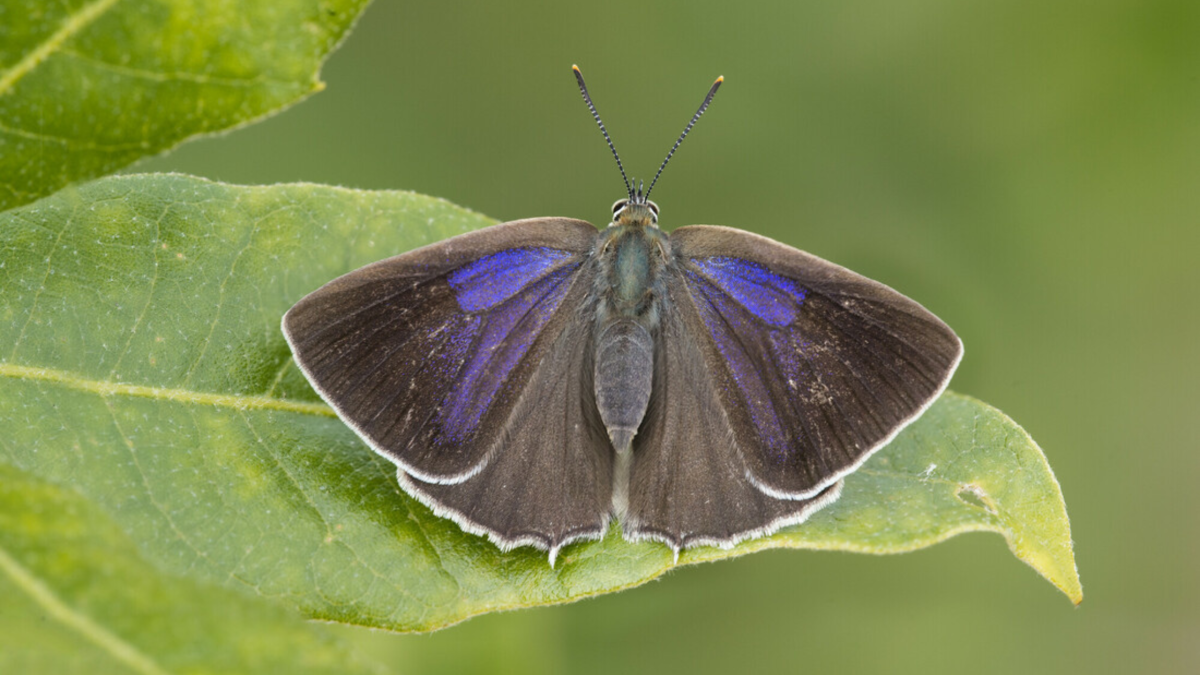
The month for arboreal butterflies
Arboreal butterfly is a loose term for butterflies which are seen more around the canopy of trees rather than closer to ground level like most of the butterfly species we see. This may be because their main caterpillar foodplant is a tree, the butterfly’s main food is in the tree, other behaviours necessitate flying higher, or a mix of these reasons.
However, due to this behaviour it makes arboreal butterflies difficult to survey using conventional methods, because they rarely come down from the treetops to be picked up on the standardised butterfly transects we complete. This means specific measures are taken to survey them.
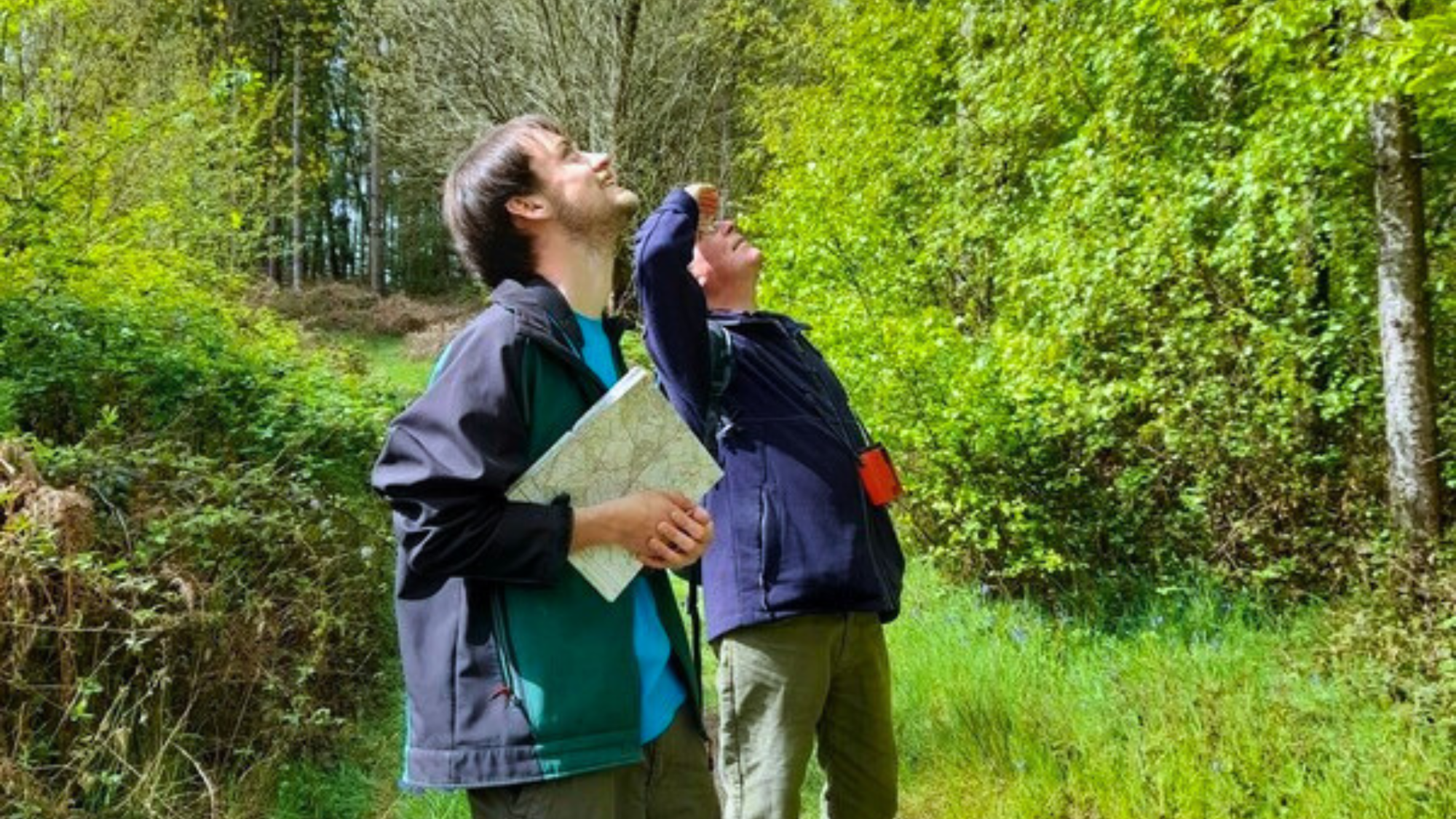
Arboreal butterfly species
Holly blue
Although often seen lower down, the holly blue may be considered an arboreal species. As the name suggests, the primary foodplant for the species is holly, although only for the spring generation; these caterpillars hatch out and become butterflies themselves in late summer, and these butterflies will mainly lay on ivy among other plants. The easiest way to separate this species from the other blues is its slightly smaller and more silvery appearance, and that it will fly well over head height, something you won’t see from any other of the local blue species.
Hairstreaks
The hairstreaks are a group of butterflies in the same Lycaenid family as the blues and coppers. Many have a thin streak of white crossing the underwing, hence the name hairstreak. In Britain, five species can be found; these are the green, black, purple, brown and white-letter hairstreaks, of which the latter three species can be seen in the Forest.
The purple hairstreak
The purple hairstreak is the most common arboreal butterfly you will see. This small species breeds on oak trees and feeds on honeydew produced by aphids in the oak canopy. This is not unique to this species, with the other two hairstreaks in the Forest also doing this. In July and August, if you look up to the top of oak trees, you will often see smaller, silver looking butterflies flitting around oak canopies – these are purple hairstreaks.
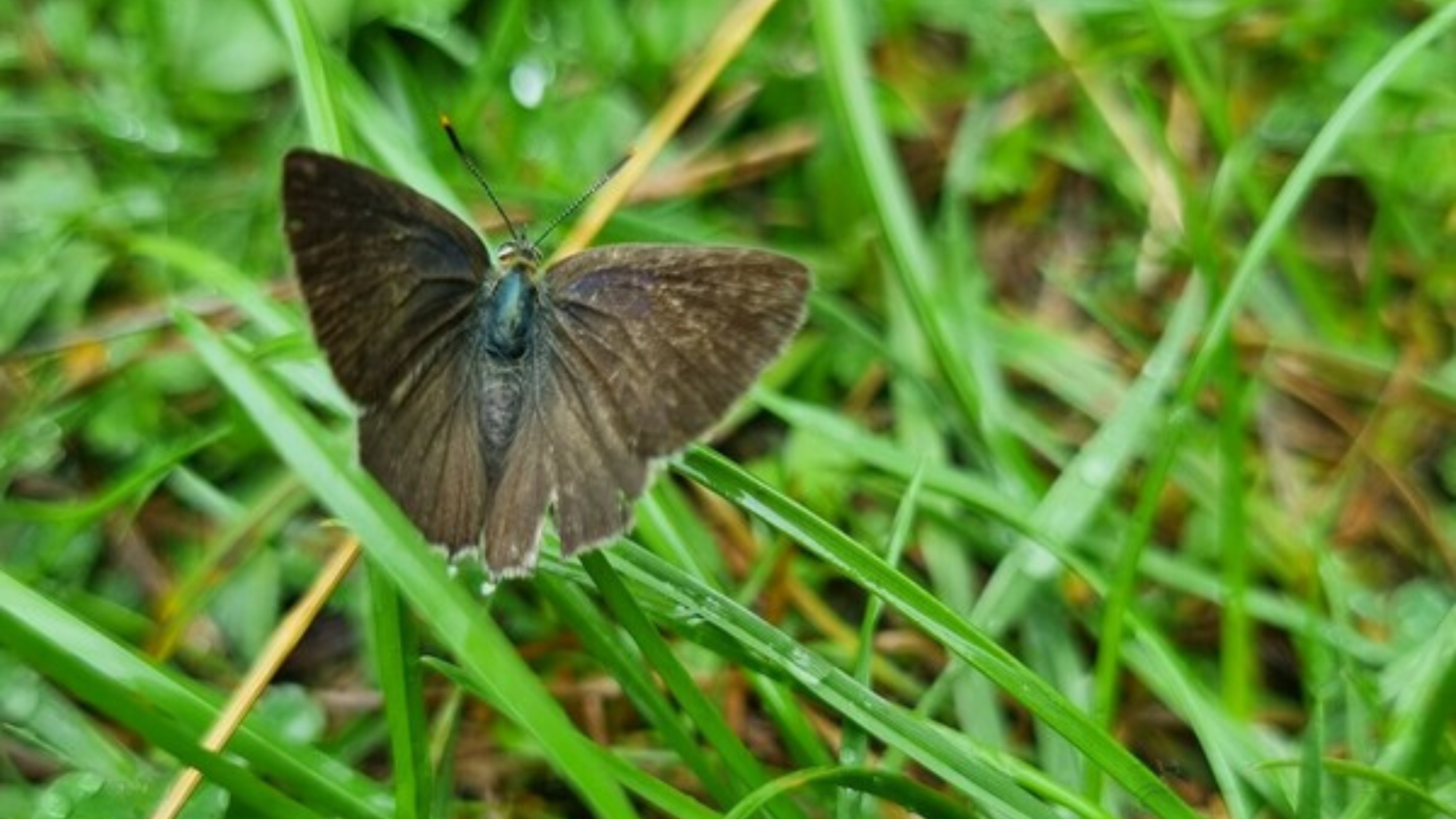
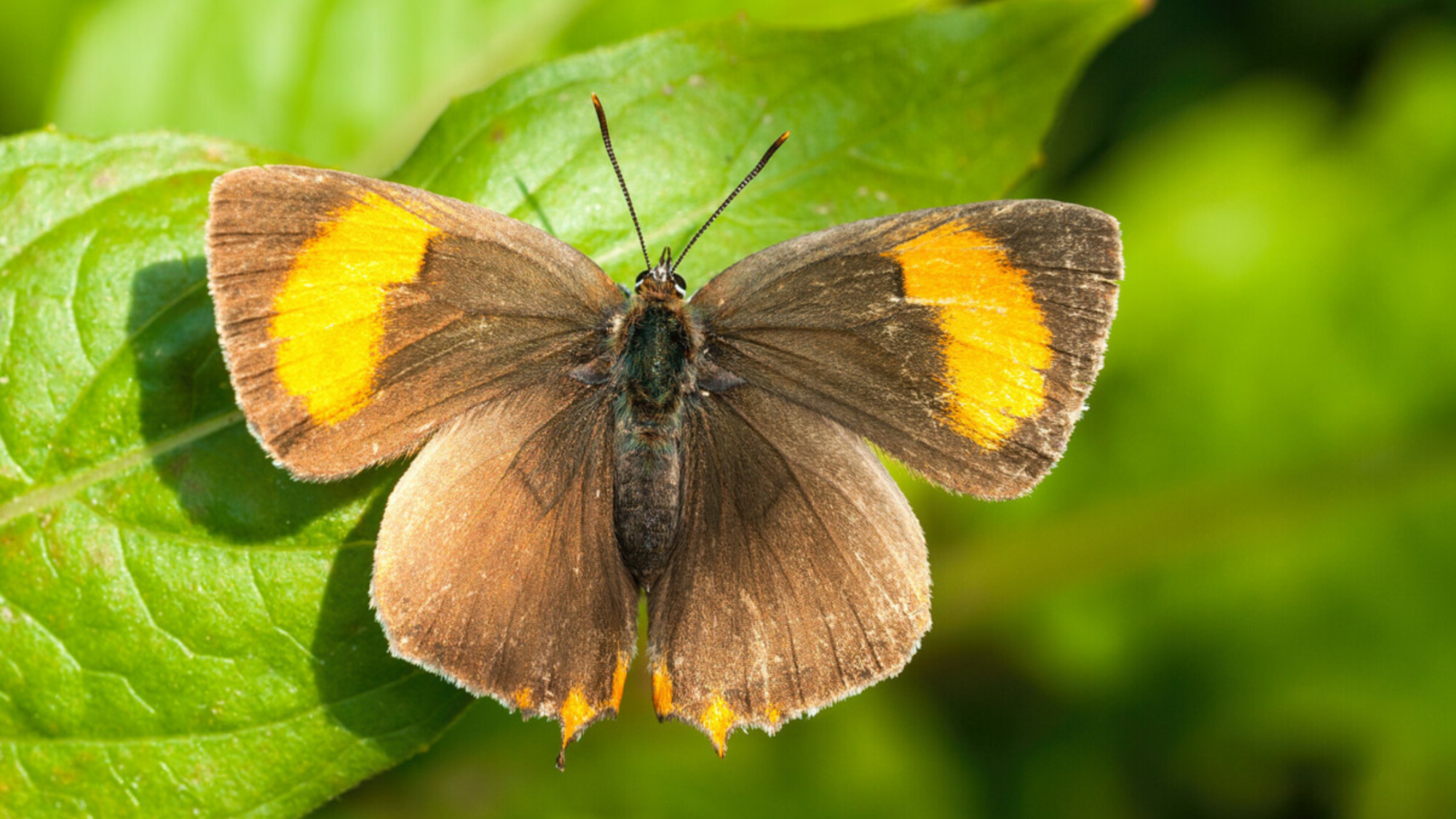
The brown hairstreak
The brown hairstreak is a far rarer (classed as Vulnerable to extinction on the GB Red List) and more elusive species than the purple hairstreak, despite being the largest of the British hairstreaks. It breeds on blackthorn, a very frequent hedgerow and woodland plant, but is very specific regarding the blackthorn it chooses. It prefers young shoots in sun and a sheltered position, especially the young shoots of suckers coming out from a hedgerow or patch of scrub, habitat that has sadly suffered large declines over the years. The elusive nature of the species means it is easier to find the white eggs against the dark stems of blackthorn than the butterfly itself!
The breeding habitat of brown hairstreak can be easily managed to increase the butterfly’s population, by ensuring that blackthorn is cut on a four-year rotation to encourage suckering growth. Our biodiversity team, with the help of volunteers, have restarted this management style in certain areas of the Forest. Records have shown that this area has been monitored for brown hairstreak eggs for over thirty years! In the past, over 200 eggs were regularly found here each winter! Sadly, this number is dropping. The latest records show fewer than 30 eggs being found. However, the great news is that with your help and our ongoing conservation efforts we should soon start to see an increase in population of this species.
The white-letter hairstreak
This butterfly is another rarer species (also classified as Vulnerable) which you can find in the Forest. The white-letter hairstreak breeds on elm trees, so when Dutch elm disease (DED) struck in the 1970s, the numbers of this butterfly decreased hugely as the elm declined. However, not all elm was as badly affected as English Elm; Wych Elm, more commonly found in ancient woodlands, is more resistant to DED, and so the butterfly has survived in woodlands, including certain areas of the Forest, better.

The purple emperor
This is the most impressive of the arboreal butterflies in the Forest and the largest butterfly you will see locally from late June to late July. They are named after the iridescent purple scales the male has on the upper side of their wings. Purple emperors lay their eggs on goat willow, grey willow, and hybrids of the two, all collectively known as sallow. The Forest is abundant with sallow in many of the areas of young as well as mature woodland, making it one of the best places in the Midlands to see this species.
On warm sunny afternoons, male purple emperor butterflies form territories between hilltop trees, usually oaks because of their size and ability to protect better from stronger winds. Purple emperors may often be present in the landscape at a low density, so it is thought establishing hilltop territories means that females can find males to breed with. Males protect these territories violently, chasing off all other creatures from birds to bees, and especially other males. Their reliability of doing this in the same locations yearly makes these territories great places to survey the butterflies and has confirmed their presence in many places across the Spernal area of the Forest.
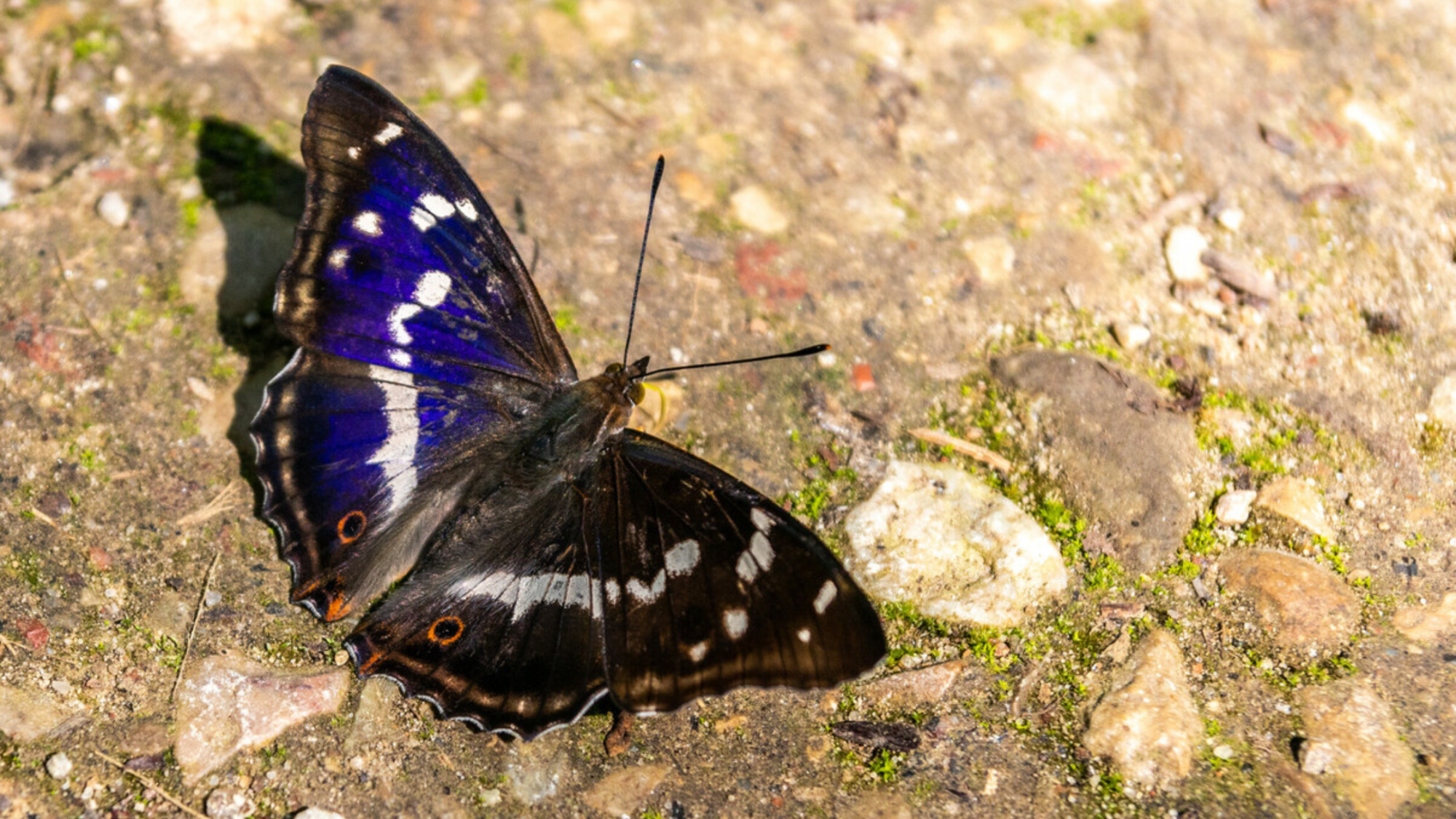
Become a part of our success story
As mentioned, specific surveys are needed to find these species, and we are hosting free training on Friday 28th June for our volunteers! No prior experience is needed, just an enthusiasm and love of nature and butterflies.
Sam from our biodiversity team is joined by Mike Slater from Butterfly Conservation Warwickshire to teach volunteers how to survey purple hairstreak, white-letter hairstreak, and purple emperor in the Forest.
We have many areas of the Forest which appear suitable for the latter two species where they haven’t yet been recorded, so it’s an exciting time to join our volunteer team. Imagine being the first to identify and record this species in a new area!
Sign up for our volunteer newsletter for information about this and other volunteer opportunities.
Do you live too far away from the Forest, but still want to help? Please consider becoming a Friend of the Forest. Your regular donation can contribute to the training, expertise, and equipment needed to ensure these magnificent creatures aren’t lost forever from our beautiful countryside. Find more information here.



